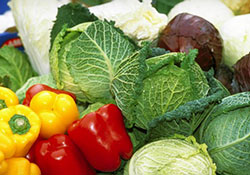Policy

WHO/P Virot
Foodborne diseases take a major toll on health, with millions of European estimated to fall ill and many dying every year as a result of eating or handling unsafe food. Food safety is hence recognized as an essential aspect of public health.
Safer food for better health: the WHO global strategy for food safety
As mandated by the World Health Assembly, WHO developed in 2002 a global strategy for reducing the burden of foodborne disease, which is being implemented worldwide. According to this strategy, the prevention of foodborne disease and the response to food safety challenges requires holistic, risk-based and timely food safety policies and strategies.
National food safety policies and strategies should aim to achieve an integrated and coordinated national food safety system that addresses the whole food chain, including environmental aspects.
Strategic plan for food safety including foodborne zoonoses 2013-2022
This Strategic Plan builds on World Health Assembly resolution WHA63.3 (May 2010) and provides a coherent framework for taking action on priority issues in the area of food safety and foodborne zoonoses for the period 2013–2022, and forms the basis of the WHO Twelfth General Programme of Work (2014-2019) for the program area food safety in Category 5.
The scope of the Plan covers food safety in all ramifications, encompassing the farm-to-table approach and including foodborne diseases of zoonotic origin. Therefore, all references to "food safety" or "foodborne diseases" comprise aspects or diseases of non-communicable and communicable origin, including foodborne zoonoses.
The Plan sets out three global strategic directions together with objectives and more detailed activities needed to achieve the overall mission:
- To lower the burden of foodborne disease, thereby strengthening the health security and ensuring sustainable development of Member States
The three strategic directions are as follows:
- Provide the science base for measures along the entire food-chain to decrease foodborne health risks
- Improve international and national cross-sectoral collaboration, enhance communication and advocacy
- Provide leadership and assist in the development and strengthening of risk-based, integrated national systems for food safety



